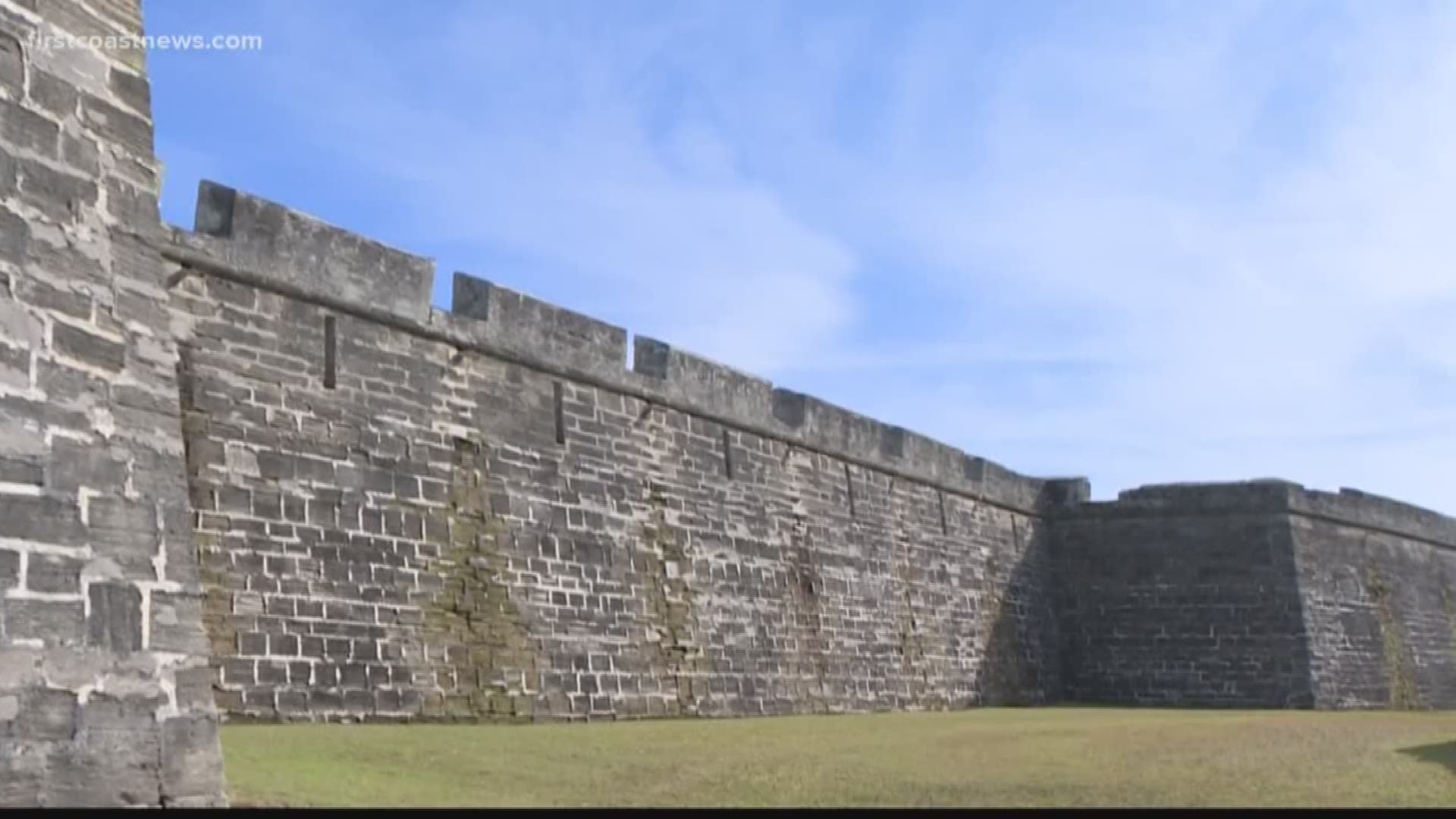ST. AUGUSTINE, Fla — The Castillo de San Marcos fort in downtown St. Augustine is cracking and eroding.
The cracks have been an issue for decades. The eroding stone bricks are a more pressing issue though.
James Crutchfield is the Project Manager at the Castillo de San Marcos.
"You can see at the top where the crack is," he said Tuesday, pointing to the walls of the fort.
The fort is more than 300 years old and the wear-and-tear is showing.
Most noticeable, are the cracks in the walls of the fort.
"They go all the way down to what would be the foundation of the fort itself," Crutchfield said.
He said the walls started to crack when there was water in the moat.
"The National Park Service flooded the moat in 1938, and from 1938 to 1996, there was water in the moat," he said.
When the cracks became noticeable, the park service removed the water from the moat and started repairing the cracks in the 1990s.
Staff continually monitors the cracks now.
"We haven't seen any noticeable large amounts of movement since the walls been repaired," Crutchfield said.
What they are noticing is something eating away at the coquina stone blocks themselves. You can see the discoloration on the walls. Water drains from the fort's gun deck through drainage spouts.
"And when that happens, it hits the sides of the walls and it's eroding the coquina," Crutchfield said.
And the water enables plants to grow into the stone bricks.
"It can actually damage the coquina," he said.
The plan to repair those areas where the vegetation is growing is to create a lime mortar sacrificial layer and spread it over the side of the wall. That way, the coquina bricks will be protected from further erosion, and the vegetation won't grow on that lime mortar.
"We want to do everything we can to protect the resource," Crutchfield said.
Crutchfield says repair work on the eroding walls will start in 2020, costing hundreds of thousands of dollars. It will be paid for by admission fees from the people who come to see old history, which still stands.

